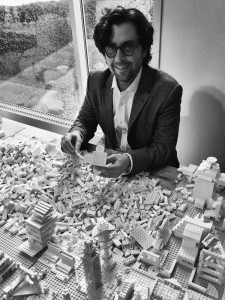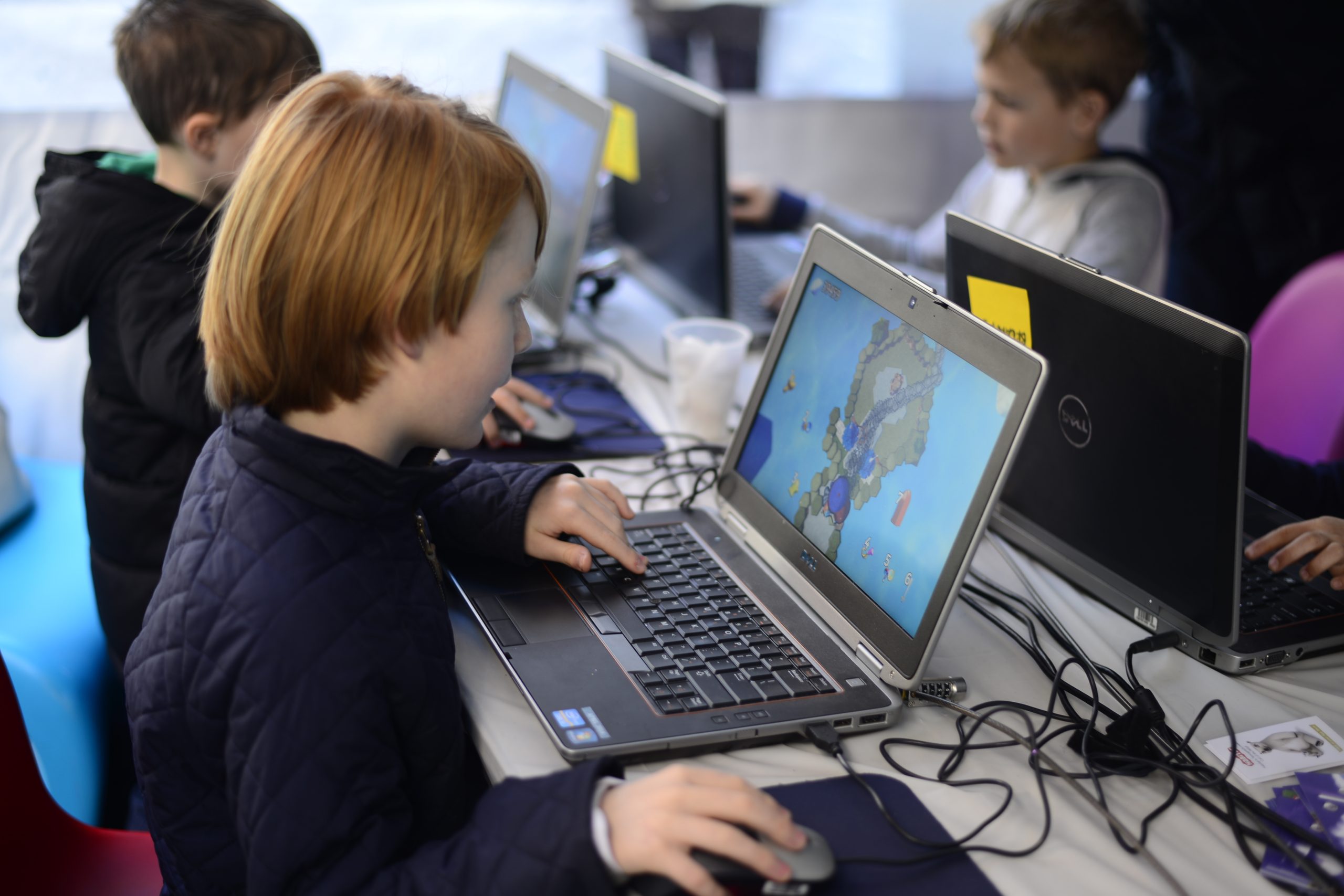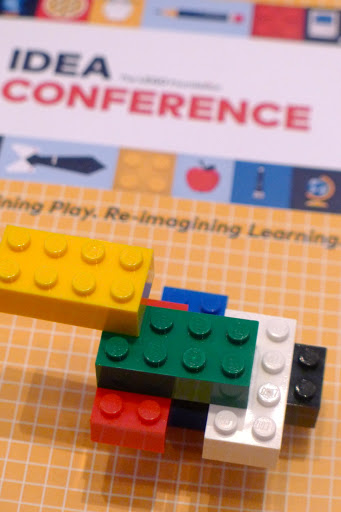 It seems like the older I get, the more time I spend with Lego bricks. Sure, I say that I buy the kits for my kids, but I’m always sitting on the floor next to them within minutes of opening the box. What’s more, the grown up part of me is impressed with the company’s business practices and fascinated by the way in which the brick itself has become such an iconic symbol all around the world.
It seems like the older I get, the more time I spend with Lego bricks. Sure, I say that I buy the kits for my kids, but I’m always sitting on the floor next to them within minutes of opening the box. What’s more, the grown up part of me is impressed with the company’s business practices and fascinated by the way in which the brick itself has become such an iconic symbol all around the world.
From a business perspective, consider that the Lego Group has had jaw-dropping success lately—25.2% revenue increase last year (from around $4.34 billion in 2014 to $5.44 billion in 2015). That’s quite an achievement for a company that seemed to be right on the verge of collapse just over a decade ago. Their 2003 annual report reads like a eulogy. But 12 years later, in 2015, they’re quick to point to “exceptional growth” even “on top of a particularly strong 2014 that was aided by the successful LEGO Movie.”
Furthermore, the brand is beloved, both as nostalgic legacy artifact and as the toy market frontrunner at a time when the kids and play market is being colonized by tablets, smartphones and video game consoles. But Lego thrives in both the tangible and digital markets. They’ve got a boatload of successful role-playing video game titles and the new NFC-enabled Dimensions line. Somehow, they’ve sustained the popularity of a product that’s just about as physical as things get, even within in a virtual space.
Of course, my best metric of what kids love to play has nothing to do with the market. It comes from observing my own children. And my eight-year-old son enjoys building with Lego bricks so much that he recently listed every under-utilized video game in his collection on eBay and used the cash to buy the newest Millennium Falcon set. He then spent a week rushing home to assemble it each day after school. Now it joins his Dr. Who Lego Tardis and Back to the Future Lego DeLorean on epic imaginary adventures across our living room rug.
Needless to say, each year in April, when I kiss him goodbye before heading off to Lego’s headquarters in Billund, Denmark, he thinks I’m the coolest dad ever. This year, he was also just a little bit envious, wishing I’d take him along. No wonder; when I show him the Legoland Conference Center’s giant sculptures via our daily Skype video calls, or when he sees the snapshots of my colleagues and me huddled around tables, building with bricks, he imagines that my week away must be all about Lego products. It’s not. I’m there to attend the Lego Foundation’s annual Idea Conference.
 In fact, despite the ubiquitous presence of building bricks, the Idea Conference has very little to do with Lego products. Instead, it brings educators, thought leaders, influencers, and policymakers together. The Lego Foundation owns 25% of the Lego Group and shares a mission with the toy company: “to inspire and develop the builders of tomorrow.” The foundation fulfills the mission through programs and research that promote and encourage play, creativity, and children’s development. The Idea Conference is their annual event at which partners, beneficiaries, and friends—as well as representatives from like-minded organizations—engage in a multi-day conversation about playful learning and global education reform.
In fact, despite the ubiquitous presence of building bricks, the Idea Conference has very little to do with Lego products. Instead, it brings educators, thought leaders, influencers, and policymakers together. The Lego Foundation owns 25% of the Lego Group and shares a mission with the toy company: “to inspire and develop the builders of tomorrow.” The foundation fulfills the mission through programs and research that promote and encourage play, creativity, and children’s development. The Idea Conference is their annual event at which partners, beneficiaries, and friends—as well as representatives from like-minded organizations—engage in a multi-day conversation about playful learning and global education reform.
If you’ve ever been to a professional conference, you know that every host says that they plan to facilitate “a conversation.” Usually, that means something that looks a lot more like a series of performances: the majority of attendees will sit in rows while keynote speakers and panelists talk at them. It’s not exactly “a conversation.” Alternatively, when the Lego Foundation says they want to facilitate a conversation, expect to see folks spending most of their time huddled in groups, sleeves rolled high, digging into a topic creatively, whimsically, and often while playing with bricks.
It makes sense. After all, it would be disingenuous to host a conference that claims to promote a shift away from the sage-on-the-stage paradigm of learning but still depends upon precisely those habitual conventions that plague most schools. But as obvious as that may seem, it remains just as rare to see an education reform conference willing to risk moving toward a more playful and participatory structure as it is to find a school that’s really willing to adopt something substantially different at an institutional level.
It brings to mind the late-great Brazilian educator Paolo Freire, whose work is so influential that many schools around the world are named for him. He once explained why he departed from what he called “the banking model of education” (where a teacher attempts to deposit knowledge into the student). Immediately after speaking to a group of adults, his wife criticized the pedagogy of his presentation. Freire describes her reaction: “‘Look, Paulo, it does not work like this.’ And I asked her: ‘what did I do? I spoke serious about serious things.’ She said, ‘Yes, of course. All you said is right, but did you ask them whether they were interested in listening to you speak about that? You gave the answers and the questions.’” Freire ultimately wrote the classic book, Pedagogy of the Oppressed, and argued for teachers-as-facilitators rather than teacher-as-experts.
Nowadays, Freire’s perspective is shared by most progressive educators, albeit without the politically subversive edge. And this is precisely what’s embodied and modeled in almost everything that happens at the Lego Idea Conference. This year’s theme was “What is Quality Learning?” And the answer, expressed in general terms, is “playful learning.” Mitch Resnick (creator of Scratch and director of MIT Medial Lab’s Lifelong Kindergarten Research Group) answered the question nicely when he suggested that quality learning requires facilitated opportunities for the four P’s: play, projects, passion, and peers.
Play involves having the freedom to explore and experiment within a set of limited boundaries—what Dutch cultural historian Johan Huizinga called “The Magic Circle.” Projects provide opportunities for hands-on immersive experiences. Passion has to do with engagement, fun, and inspiration. And with peers, students not only learn to connect, but also how to articulate, translate, and communicate content among different individuals and diverse contexts.
Sure, playful learning is convincing on an abstract level, but what happens when you take into consideration a plethora of different cultural, geographical, and economic contexts from around the globe? How do we make it work on an infrastructural level? How do we implement and encourage playful curricula, which incorporate Resnick’s four Ps, in scalable ways? How do we make sure it reaches the 38% of worldwide children who are not learning basic literacy and numeracy? Recognizing the importance of those questions, Lego Foundation included delegates from six different countries—the USA, Denmark, Mexico, South Africa, Philippines, and Kenya—who began the conference by sharing the unique strengths, challenges, and concerns of their particular school systems.
Country-specific working groups stayed focused throughout the two-day conference (I worked on the Philippines). On the first day, each group explored, reflected, and brainstormed. Some cohorts were joined by that country’s education minister, others included high-level administrators and teachers. On day two, each group came up with “actionable and measurable models” for change. For example, the USA group suggested that adding just 10 minutes a day of student-led curricula could be a small but powerful paradigm shift. They called it “the power of 10.” Finally, we all considered ways in which to bring the models to scale.
In between these working sessions, we all came together in plenary sessions. Some of these featured education researchers like Jack Shonkoff, Kathy Hirsh-Pasek, and Pasi Sahlberg. Others announced new Lego Foundation initiatives, like their partnership with Sesame Workshop to bring more playful learning to South Africa, and the new PlayFutures Community—an ambitious project that will connect people from all disciplines who are involved in playful learning. Toward the end of the conference, Rebecca Winthrop, director of the Center for Universal Education at the Brookings Institute, announced the new report, Millions Learning: Scaling Up Quality Education in Developing Countries.
As always, Kjeld Kirk Kristiansen and Thomas Kirk Kristiansen (grandson and great-grandson of Ole Kirk Christiansen, the founder of Lego) were present throughout. They presented the annual Lego Prize, which has been “awarded to individuals or organizations that have made an outstanding contribution to the lives of children” since 1985. This year, the award went to Pasi Sahlberg, author of Finnish Lessons 2.0: What can the world learn from educational change in Finland. They also presented gift boxes, which include six bricks, and define the “Lego Idea,” to all the attendees. Read the definition in the photo below; it is the best way I can think of to conclude this post…








